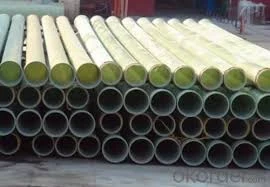
-
 Afrikaans
Afrikaans -
 Albanian
Albanian -
 Amharic
Amharic -
 Arabic
Arabic -
 Armenian
Armenian -
 Azerbaijani
Azerbaijani -
 Basque
Basque -
 Belarusian
Belarusian -
 Bengali
Bengali -
 Bosnian
Bosnian -
 Bulgarian
Bulgarian -
 Catalan
Catalan -
 Cebuano
Cebuano -
 China
China -
 China (Taiwan)
China (Taiwan) -
 Corsican
Corsican -
 Croatian
Croatian -
 Czech
Czech -
 Danish
Danish -
 Dutch
Dutch -
 English
English -
 Esperanto
Esperanto -
 Estonian
Estonian -
 Finnish
Finnish -
 French
French -
 Frisian
Frisian -
 Galician
Galician -
 Georgian
Georgian -
 German
German -
 Greek
Greek -
 Gujarati
Gujarati -
 Haitian Creole
Haitian Creole -
 hausa
hausa -
 hawaiian
hawaiian -
 Hebrew
Hebrew -
 Hindi
Hindi -
 Miao
Miao -
 Hungarian
Hungarian -
 Icelandic
Icelandic -
 igbo
igbo -
 Indonesian
Indonesian -
 irish
irish -
 Italian
Italian -
 Japanese
Japanese -
 Javanese
Javanese -
 Kannada
Kannada -
 kazakh
kazakh -
 Khmer
Khmer -
 Rwandese
Rwandese -
 Korean
Korean -
 Kurdish
Kurdish -
 Kyrgyz
Kyrgyz -
 Lao
Lao -
 Latin
Latin -
 Latvian
Latvian -
 Lithuanian
Lithuanian -
 Luxembourgish
Luxembourgish -
 Macedonian
Macedonian -
 Malgashi
Malgashi -
 Malay
Malay -
 Malayalam
Malayalam -
 Maltese
Maltese -
 Maori
Maori -
 Marathi
Marathi -
 Mongolian
Mongolian -
 Myanmar
Myanmar -
 Nepali
Nepali -
 Norwegian
Norwegian -
 Norwegian
Norwegian -
 Occitan
Occitan -
 Pashto
Pashto -
 Persian
Persian -
 Polish
Polish -
 Portuguese
Portuguese -
 Punjabi
Punjabi -
 Romanian
Romanian -
 Russian
Russian -
 Samoan
Samoan -
 Scottish Gaelic
Scottish Gaelic -
 Serbian
Serbian -
 Sesotho
Sesotho -
 Shona
Shona -
 Sindhi
Sindhi -
 Sinhala
Sinhala -
 Slovak
Slovak -
 Slovenian
Slovenian -
 Somali
Somali -
 Spanish
Spanish -
 Sundanese
Sundanese -
 Swahili
Swahili -
 Swedish
Swedish -
 Tagalog
Tagalog -
 Tajik
Tajik -
 Tamil
Tamil -
 Tatar
Tatar -
 Telugu
Telugu -
 Thai
Thai -
 Turkish
Turkish -
 Turkmen
Turkmen -
 Ukrainian
Ukrainian -
 Urdu
Urdu -
 Uighur
Uighur -
 Uzbek
Uzbek -
 Vietnamese
Vietnamese -
 Welsh
Welsh -
 Bantu
Bantu -
 Yiddish
Yiddish -
 Yoruba
Yoruba -
 Zulu
Zulu
Durable and Lightweight FRP Hull Designs for Optimal Performance on Water
The Rise of FRP Boat Bodies A New Era in Marine Engineering
In the world of marine engineering, the materials used in boat construction have undergone remarkable transformations over the years. One of the most significant developments has been the adoption of Fiber Reinforced Polymer (FRP) for boat bodies. The shift towards FRP boat bodies represents a new era in the boating industry, combining innovation with practicality to create vessels that are more efficient, durable, and environmentally friendly.
Understanding FRP
Fiber Reinforced Polymer (FRP) is a composite material made from a polymer matrix reinforced with fibers, typically glass, carbon, or aramid. The unique properties of FRP make it an outstanding choice for marine applications. It boasts a high strength-to-weight ratio, corrosion resistance, and reduced maintenance requirements, making it particularly suitable for boat construction.
One of the most appealing aspects of FRP is its lightweight nature. This characteristic contributes to enhanced performance on the water, as lighter boats generally achieve better speeds and fuel efficiency. Furthermore, the reduced weight allows for increased cargo capacity, making FRP boats ideal for both recreational and commercial use.
The Advantages of FRP Boat Bodies
The Rise of FRP Boat Bodies A New Era in Marine Engineering
2. Design Flexibility FRP materials can be molded into complex shapes and designs, providing greater flexibility in boat design. This flexibility allows manufacturers to create more streamlined and aesthetically pleasing vessels without compromising on strength or performance. Additionally, the production processes for FRP can be adapted to accommodate a wide range of custom designs, catering to individual preferences and specifications.
frp boat body

3. Low Maintenance Unlike wooden boats, which require regular painting, sealing, and repairs to combat rot and deterioration, FRP boat bodies are relatively low maintenance. A simple wash down after use is often sufficient to keep the boat looking new. This low maintenance requirement is particularly appealing for recreational boat owners who want to spend more time on the water and less time on upkeep.
4. Environmental Impact The shift towards FRP can also be seen as a step towards more sustainable practices in the marine industry. Many manufacturers are now focusing on using recycled materials in their FRP products, reducing waste and promoting environmentally friendly practices. Additionally, the lightweight nature of FRP boats can lead to lower fuel consumption and emissions, contributing to a cleaner marine environment.
Challenges and Future Prospects
While the advantages of FRP boat bodies are numerous, there are also challenges that the industry must address. One such challenge is the initial cost of production, which can be higher than traditional materials due to the advanced technology and processes involved in creating FRP. However, as production processes become more efficient and the demand for FRP boats grows, costs are expected to decrease over time.
Furthermore, the environmental impact of the production and disposal of FRP materials presents a challenge. While the inherent properties of FRP lend themselves to longevity and reduced maintenance, the question of how to recycle or dispose of FRP at the end of its lifecycle remains a critical issue that the industry must tackle.
Looking ahead, the future of FRP boat bodies appears promising. As advancements in technology continue to evolve, we can expect to see even more innovative uses for FRP in marine applications. Manufacturers are likely to invest in research and development to improve the sustainability and recyclability of FRP products, paving the way for a more responsible approach to boat construction.
Conclusion
In conclusion, the rise of FRP boat bodies marks a significant advancement in marine engineering. With their myriad advantages, including weight efficiency, corrosion resistance, design flexibility, and low maintenance needs, FRP boats are changing the face of the industry. While challenges still exist, the ongoing innovation in this field promises an exciting future for both manufacturers and boaters alike. As we embrace these advancements, we move closer to a more sustainable and efficient boating experience.









